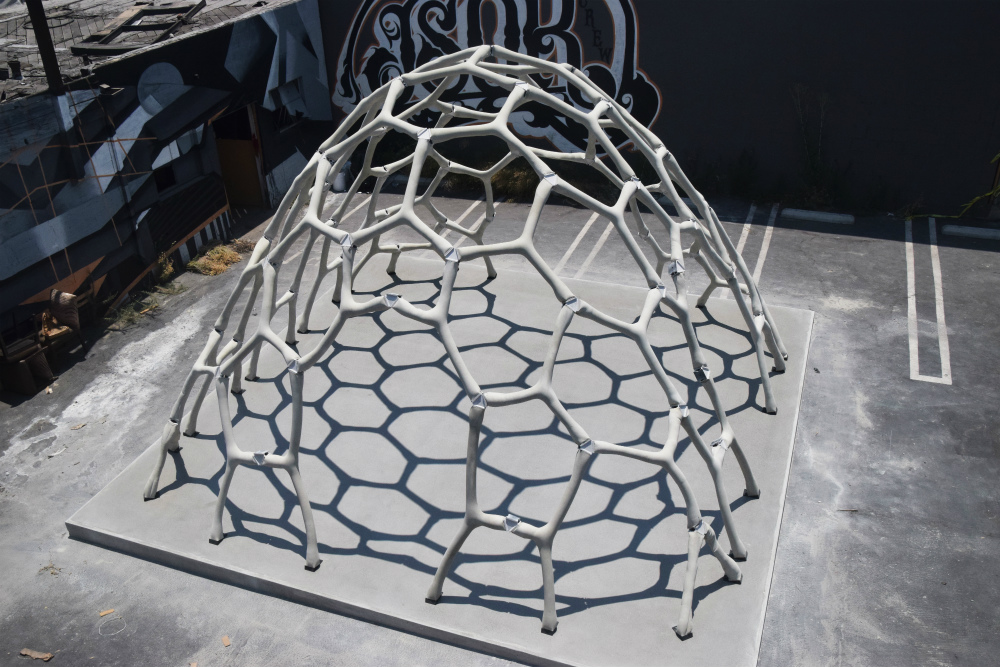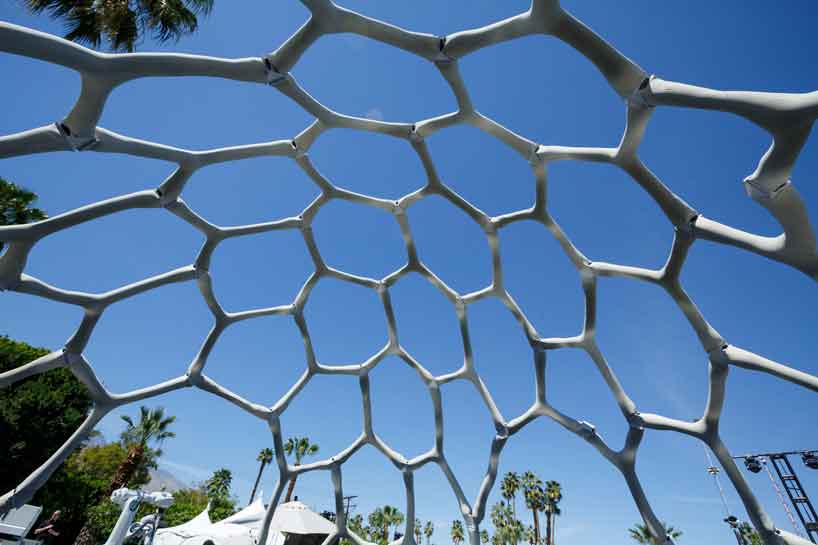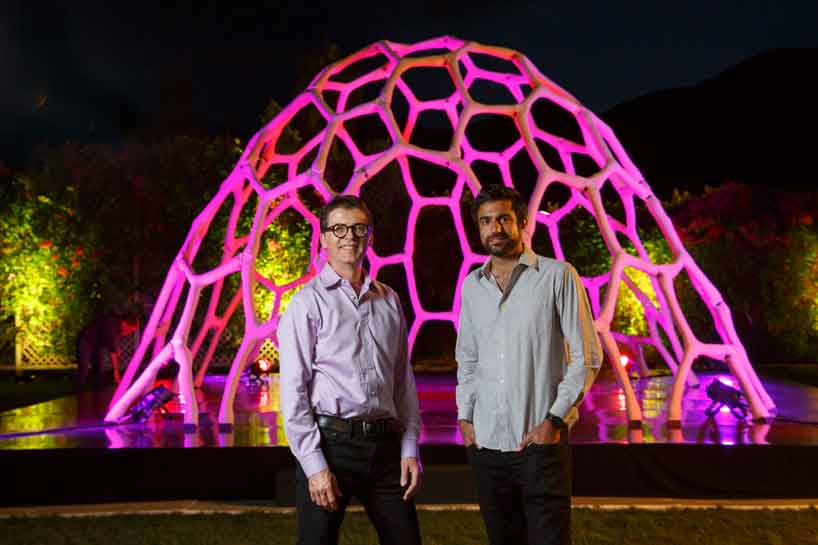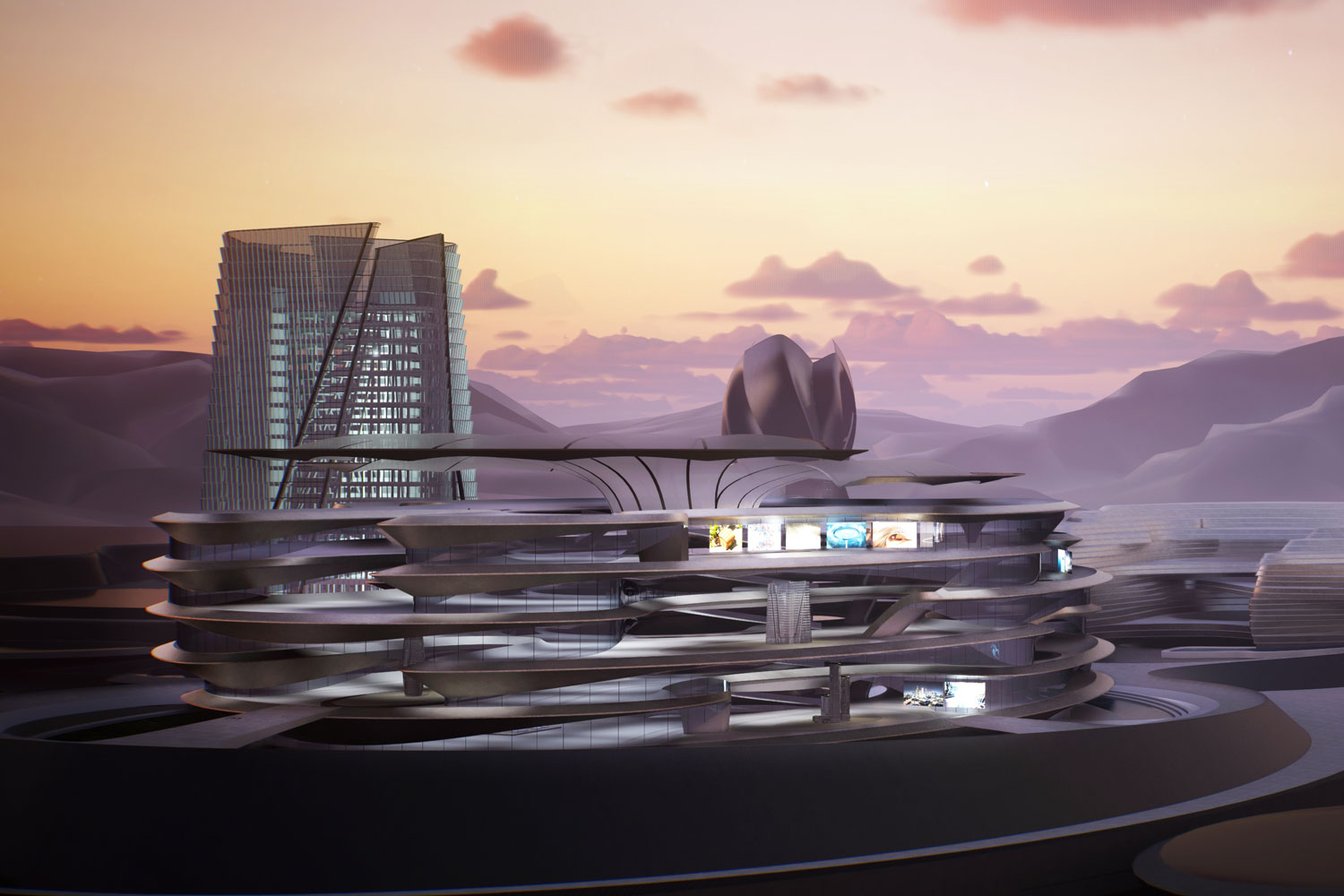
Mars pavilion is the world’s first robotically built concrete pavilion by Form Found Design in California, United States.
The almost very industry is taking manufacturing processes and retrofitting them with automated, robotic workflows. When Amazon reached out to Form Found Design to build a pavilion for their robotics conference, FFD proposed a new collaboration between robot and builder that allows for the rapid prototyping of concrete.
The MARS Pavilion combines the precision of robots and the freedom of fabric to achieve an otherwise impossible organic geometry.

Industrial robot arms manipulate fabric sleeves, creating an adjustable formwork into which concrete is poured. No two components are the same in the structure, which is designed to be a catenary to keep every member in compression. Steel fiber is introduced in lieu of rebar, yielding a 25% increase of compressive, tensile, and flexural strengths.
A uniform steel connection detail is used throughout, creating a consistent means for assembly. The pavilion is currently wrapped in its individual components, in Los Angeles where it awaits its next home.

Connections were fabricated with aerospace-level precision by American Best Engineering. Footings were fabricated by Aero Welding. Walter P. Moore provided engineering support and ABB Robotics provided industry collaboration and support.
Helix Steel and CTS Cement sponsored the Pavilion’s exhibit at the A+D Museum in Los Angeles. Both companies are currently strategic partners.


About Form Found Design:
Form Found Design, Inc. is an award-winning, Los Angeles-based architecture and design studio, operating at the intersection of technology and nature. We believe that innovative design requires both an experimentation and therefore mastery of both material and technology. Our work bridges this gap, exploring advancements in robotics, material science, and project workflows. The result is an architecture that is derived rather than contrived. Form-finding manifests in both the process and the product.

Architecture: Form Found Design
Engineering: Walter P. Moore
Partners: ABB Robotics
Client: Amazon
Design Team: Joseph Sarafian, Ron Culver, Steve Fuchs, Andrew Lindauer, David Spiva








> Via Form Found Design







































